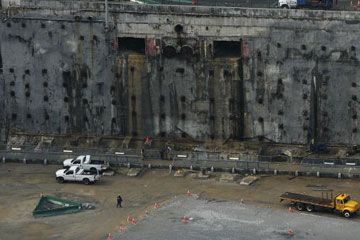Ask any American and they'll tell you where they were when al-Qaedaterrorists attacked New York City's World Trade Centertowers on Sept. 11, 2001. Millions of people across the nation stood slack-jawed in front of televisions as they watched airplanes slam into lower Manhattan's twotallest skyscraperswith fiery force. When it seemed that the country's worst fears had already been realized, the 110-story buildings collapsed, engulfing those fleeing the scene in a dusty cloud of debris. As people struggled to come to terms with the horrific events of that day, they wondered, how could such massive structures be reduced to a pile of rubble?
This wasn't the first time the World Trade Center had been targeted by Islamic extremists. On Feb. 26, 1993, seven men collaborated to detonate a truck bomb in the underground parking garage, killing six people. While this earlier attack blew a crater 100 feet (30.5 meters) wide and several stories high into the base of the north tower, it failed to bring the building down [source:FBI]. To many Americans, the towering skyscrapers seemed indestructible. Less than a decade later, this perception would be contradicted in dramatic fashion.
Advertisement
Sept. 11, 2001, began as a typical Tuesday in New York City. Skies were clear as residents flooded the city's streets and subways to make their morning commute. Then, at 8:46 a.m., a Boeing 767-200ER aircraft crashed into the north face of the north tower between floors 94 and 98. Startled New Yorkers turned their eyes to the top of the city's skyline and wondered whether this was an accident, or perhaps something more sinister. Such questions were laid to rest at 9:03 a.m., when a second Boeing 767-200ER struck the south face of the south tower between the 78th and 84thfloors. Theairplanes, loaded with jet fuel, sparked fires in both buildings that burned intensely on several floors. At 9:59 a.m., just 56 minutes after the south tower was hit, it collapsed, sending up a choking cloud of dust that spread across the New York skyline. The north tower soon followed suit, crumpling to the ground at 10:29 a.m., 1 hour and 43 minutes after it was struck. The attacks killed 2,830 people, including 2,270 building occupants, 157 airline crew and passengers, and 403 emergency responders [source:FEMA].
The collapse of the World Trade Center towers shocked the world and changed the United States in significant ways. Why did they fall? Or perhaps the first question should be, how were they built?
Advertisement






